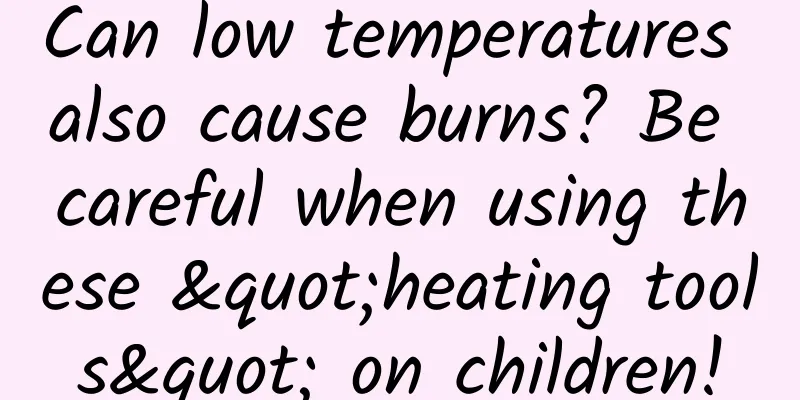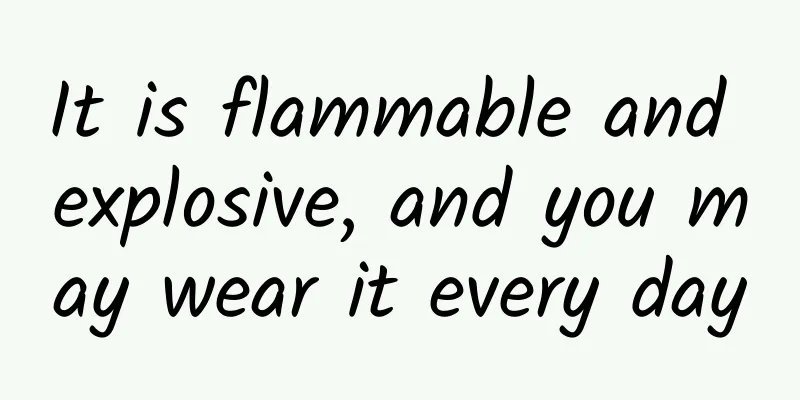Can low temperatures also cause burns? Be careful when using these "heating tools" on children!

|
cold, cold, cold, cold, cold, cold … This wave of cold air There is a fierce rush to achieve good results at the end of the year! Many of my friends have been Keep a warm baby by your side and use an electric blanket to protect your body at night Parents are also worried that their children will get cold. In addition to wrapping the child in three layers inside and three layers outside Various "heating tools" have also been used However, although the "artifacts" can bring warmth and comfort Once used improperly It may make the baby "very hurt" Let’s take a look at what’s going on. "Chicken thief" low temperature burns, Learn more Many people may wonder, can low temperature cause burns? Low temperature burns are much more serious than ordinary burns! Common burns and scalds are usually caused by contact with high-temperature gas, flames, boiling water, etc. Such injuries are usually obvious and easy for people to detect and avoid. Low-temperature burns are a bit like "boiling a frog in warm water". They refer to burns caused by the temperature of about 50°C acting on the local part of the human body for too long, allowing the heat to slowly penetrate into the subcutaneous soft tissue. In the early stages of the disease, only the human body's epidermis is affected. If the heat source is removed in time, the damage can be completely controlled. However, if one adapts to the temperature, it will be difficult to detect it in time, causing the heat to penetrate into deeper tissues and aggravate the burns. Look at the picture below. People will feel uncomfortable if they are exposed to a temperature of 50°C for 5 seconds. As time goes by, the damage to the skin will increase. In fact, as long as the temperature reaches 44°C for 6 hours, it can cause skin damage. What is 44℃? How far is it from us? Several common heating devices on the market can reach different temperatures, but overall, the average temperature in actual use is between 40-50℃, which is in the "high-incidence range" of low-temperature burns! Infants, the elderly, paralyzed patients or drunk people often become "high-risk groups" for low-temperature burns due to their slow sensory reactions. Don't think "just avoid it if you feel it's hot". By the time you feel it, you may have already been burned! Although the wound area of this type of burn looks small, most of the early symptoms are just redness, swelling, blisters, and whitening, but in fact, the damage may be deep to the subcutaneous tissue and muscles. The severity mainly depends on the time of contact with the heat source. The longer the time, the more serious the skin damage. This special type of burn is easy to be ignored. Parents must be cautious and take precautions. Thinking of those bloody pictures on children's tender skin is really shocking. Key point: If you must use a hot water bottle for heating in winter, please wrap a towel around the hot water bottle to avoid direct contact with the skin. After the elderly and children fall asleep, help them take away the hot water bottle. For first aid for burns, remember these five tips! The main factors affecting burns are the maximum temperature and contact time! So remember these two points: get away from the heat source and cool down quickly. Then, use the on-site conditions to quickly start the five first aid steps of "rinsing, removing, soaking, covering, and sending". Rinse: When a child is scalded, rinse the scalded area with running cold water for at least 20 minutes as soon as possible to reduce the heat on the skin surface and reduce further damage to the skin. Second removal: After sufficient rinsing and soaking, carefully remove the clothing in cold water. If the wound is stuck to the clothing, cut it open carefully to avoid tearing it apart forcefully. Three soaks: If the pain is obvious, soak in cold water for 10-30 minutes to relieve the pain. Fourth, cover: gently cover the affected area with sterile gauze. If gauze is not available, a clean and dry towel can be used instead. Remember not to cover with hairy or flocculent objects to avoid adhesion to the wound. Fifth send: Go to hospital for treatment immediately! Once again: Do not apply anything on your own, give it to the doctor! Remember, use cold water, don't use ice cubes, which can easily cause frostbite on the skin, and don't apply anything on your own. (Don't apply any folk remedies such as rat oil, soy sauce, toothpaste, red medicine, gentian violet, etc.!!!) Finally, beware of these 4 types of "heating artifacts" Common heating devices in winter include, in addition to hot water bottles, electric blankets, electric heaters, etc. They have different safety hazards and different precautions. 1. Electric hot water bottle There are two common types of rechargeable hot water bottles on the market, one is the electrode type and the other is the heating wire type. The electrode type hot water bottle has the risk of explosion. In 2010, Taiwan had already listed "electrode-type electric hot water bottles" as a product that cannot be produced. However, this type of electrode-type electric hot water bottle has not disappeared from the market, but has become more common than the safer electric heating wire water heater. Although there are safety risks, there is no need to be too afraid. As long as you choose a regular manufacturer when purchasing, have 3C certification and product certificate, and the power cord is well sealed, and do not stick it directly to the skin when using it, but wear a few layers of clothes, there will be no problem. 2. Electric blanket Every year, there are news reports of fires caused by improper use of electric blankets. In addition, children using electric blankets are prone to bedwetting, which can lead to leakage and very serious consequences. Therefore, when using electric blankets, in addition to purchasing qualified products, you should also be careful not to use them for more than six years and do not fold them repeatedly and try to lay them flat. According to the previous introduction, 40℃ is actually a relatively safe temperature. If you are really afraid of the cold, you can set a suitable temperature, turn off the power before going to bed, and it is recommended that the usage time should not exceed 4 hours. 3. Electric heater Electric heaters or electric fans are the same. If used improperly, there is a risk of fire. Be careful when using: do not cover it with quilts, clothes or other flammable materials, and keep it away from sofas, beds, and water sources. Stay away from flammable objects! Stay away from flammable objects! Stay away from flammable objects! Important things must be said three times! 4. Heating mouse pad In addition, there is another "heating artifact" that deserves everyone's attention, that is - the heating mouse pad. The heating mouse pad looks "magical", but it is actually a miniature electric blanket. After two hours of continuous heating, the local maximum temperature can reach 68°C. If we are not careful, we will all become frogs in warm water, and be caught off guard by the comfortable temperature. Source: Healthy China, Evolution of Parenting, Jiangsu Centers for Disease Control |
<<: Do you need to absorb the oil when eating instant noodles? Is oil-absorbing paper safe?
Recommend
In these three information flow cases, how can the customer acquisition cost be controlled within 60?
Today I bring you several excellent information f...
The diving grandpa from Tianjin has become a hot topic on the Internet, and orthopedic doctors can’t sit still: Unscientific diving = jumping off a building!
Recently, the Tianjin diving grandpa has become p...
Insights: True self-discipline is to be responsible for your own life
Famous Artists Gallery | Chen Banding, also known...
Free Qianjiang Road Investment Course
The course lecturers are researchers and fund mana...
How to plan creative materials for high-conversion information flow ads? Avoid these 4 mistakes!
Before talking about what is good information flo...
Zhihu order number 2500 cash income, batch brainless operation to earn 30,000 per month money-making project
Zhihu order number 2500 cash income, batch brainl...
What is Quantum Dot TV
Domestic color TV giant TCL recently released its...
Case analysis: The complete planning process of a fission activity!
Background: In the second half of the Internet, t...
When is the best time to eat cookies and cakes to stabilize blood sugar?
I believe many people have this dilemma: they wan...
Once again, turn on this function on your phone, it can save lives at critical moments →
At present, earthquake relief work in Gansu and Q...
ATET A8 Bluetooth controller with customized appearance review
As one of the control standards for many games, t...
Can black and white color ultrasound still be called color ultrasound?
Produced by: Science Popularization China Author:...
US expert: China's auto industry is developing synchronously in all fields
At a recent symposium organized by the University...
52 years later, Dongfanghong-1 is still flying in the sky? !
This article was reviewed by Liu Yan, Space Appli...









